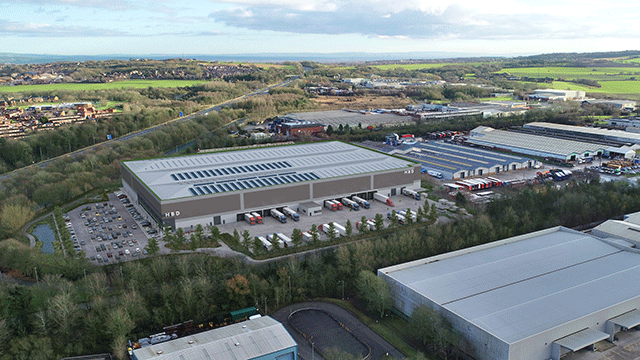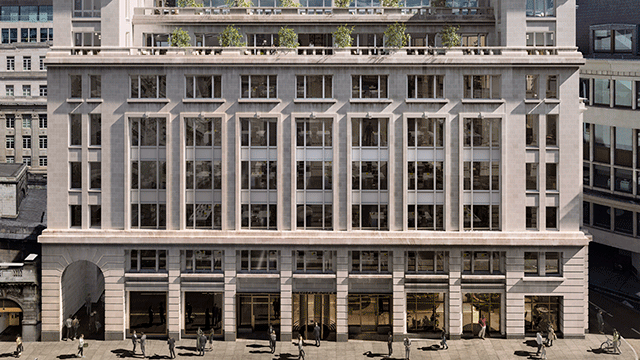The outlet centre market has thrived in the UK and western Europe for decades. There are 52 outlet centres in the UK alone, with over 100 more across Western Europe. In more recent years developers have looked east to countries such as Poland, Romania and Hungary. But now, as a combination of market saturation and the global recession has slowed growth across Europe, outlet developers are looking further afield for the next opportunity.
The obvious next step for European developers, arguably alongside Turkey, is Russia. Later this year the country will witness the opening of its first two outlet centres by major Western developers, both in Moscow: the Fashion House Moscow scheme in the northwest of the city and the Hines Outlet Village Belaya Dacha scheme. Other developers will be keeping a close eye on the success of these schemes, because if the Russian consumer takes to the outlet concept, then the opportunity across Russia could be huge.
Growth in the Russian retail market
Over the past decade Russia has been one of the fastest-growing markets in the world. Development has slowed in the past year but, unlike most of Europe, the Russian economy is still growing at a healthy rate; in the first quarter of 2012 GDP grew by 4.9%. This strong economic growth has had a knock-on effect on retail sales, which grew by 6.8% in the second quarter of 2012. As disposable incomes increase, spending patterns are moving towards those typically found in the developed markets of western Europe. Consumers are spending a lower proportion of their incomes on the essentials such as food and households bills, and spending more on the nice-to-haves, such as fashion, jewellery, etc.
Over the past five to ten years this increase in consumer demand has led to a rapid rise in shopping centre provision across the country, most notably in Moscow and St Petersburg. This rapid change in the retail landscape has brought with it, and was also driven by, an influx of western brands that spotted the opportunity.
In 2006, the top five retailers in the country had just a 5% market share, reflecting the dominance of local and independent retailers. One just needs to look at some of the newer Moscow malls to see the shift from local retailers to multinationals. Walking into a mall such as Metropolis, anchored by Zara, River Island and Marks & Spencer, or the new AFIMALL City, anchored by Marks & Spencer, and home to Banana Republic, Next, H&M and Gap, you could be walking into a mall anywhere across Europe.
In 2011 20% of all new retail floorspace in Europe was opened in Russia, a third of which was in Moscow. This year has so far seen a similar pattern. Development has slowed since 2011 but, alongside Turkey, Russia is still the largest development market in Europe. The key to ensuring continued growth will be replicating the success that retail has had in Moscow across Russia’s smaller cities, and to explore new forms of retail, such as outlet centres, within Moscow itself.
The move from Moscow
One of the main reasons behind the slowing of development across the country is the decline in the Moscow retail pipeline. Initially Moscow offered the best and safest opportunity for developers and retailers alike. Its large population and emerging middle class made it the obvious choice for retailers to start their Russian portfolio. But now, as retailers have established themselves in the Russian market, they are looking beyond, and two of the largest schemes due to open in Russia in 2012 are both outside of Moscow: the 169,000 m2 Oz Mall in Krasnodar and the 110,000 m2 Planeta in Ufa.
For Moscow, as the full-price shopping centre pipeline slows, the outlet centre concept is beginning. In 2012 the city will witness the opening of Russia’s first true outlet centres and, although the concept will begin in Moscow, given time it will follow the same pattern as full-price retail and expand into the other Russian markets.
Developers are already acting on this trend. One of Europe’s biggest outlet centre developers, Fashion House, which is set to open its first Russian scheme in Moscow later this year, is already planning to open further schemes in St Petersburg, Yekaterinburg and Chelyabinsk, among others.
Why the time is now
Two main factors mean that Russia is poised to capitalise on what should be huge demand for these outlet centres: the maturation of conventional retail and demand from consumers.
For the former, outlet centres require a critical mass of conventional stores before they become viable, and it is only recently that the retailers themselves have called for outlet centres in the Russian market. Roughly speaking, to have enough excess stock to fill an outlet store, a retailer needs to have 10 full-price stores. A number of retailers across Moscow now fall into that category and the demand from retailers for outlet centres is high, reflected in the interest to open stores in the Hines and Fashion House schemes.
For the latter, Russia is a country with a huge number of fashion-conscious consumers, who have an increasing amount of disposable income and pre-existing exposure to the types of brands that will be present in these schemes, all of which makes the country an ideal market.
The main stumbling block from a consumer point of view is the lack of awareness of outlet retailing. This concept is completely alien to the Russian consumer. The term “discount retailer” has a very different meaning in the Russian market. Black-market goods or legitimate discounted goods sold in non-purpose built, poorly laid out centres are a far cry from the schemes that Fashion House and Hines will be unveiling later this year.
The scale of the opportunity
Tackling awareness could open up a whole new format of retailing for the Russian market, and with it a huge development pipeline but, for that to happen, the market will have to mature.
To measure just how big the outlet centre opportunity in Russia is, CACI has analysed the number of inhabitants per outlet centre catchment across Europe and compared it with the Russian market. For the purpose of this analysis, an outlet centre catchment is defined the population living within a 60-minute drive time from an outlet centre.
Across Europe the average population within a 60-minute drive time catchment of an outlet centre is 3.5m. There are extreme variances within this average. Outlets located in densely populated areas such as Cheshire Oaks in northwest England or McArthurGlen Roermond, Netherlands, whose catchment spans three countries, have catchment populations of 5.8m and 9m respectively. On the other hand, some more rural schemes in France and Italy have 60-minute catchments of around 350,000.
Moscow has a population of 13m within a 60-minute drive time. Based on the average 60-minute catchment population of 3.5m, this means that the city could support around four outlet centres. St Petersburg has a population of 4.8m within 60 minutes and could therefore support at least one outlet centre. There are a further 12 locations with a 60-minute drive time population of over 1m that could also be considered as strong locations, given that more remote outlets across Europe contain catchments with populations around 350,000. There are a further 18 locations across Russia with 60-minute drive time catchments bigger than this. This means that the country could potentially support 36 outlet centres.
The caveat is that this analysis is based on the average catchment sizes across Europe where the outlet centre market is far more established. It would take Russia a number of years to reach the levels of maturity that could support this number of outlets.
Russian nuances
So how should we differentiate the Russian market from the more recognisable picture we get in much of the rest of Europe? Firstly, Russia is still an emerging market and therefore does not have the same levels of wealth as a number of other European countries. Our analysis is based on population and assumes that, over time, the emerging Russian middle class will develop to bring wealth in line with the rest of Europe.
Aside from current spend levels there is one fundamental difference between Russia and the rest of Europe, and that is geography. Russia is a vast country covering an area of approximately 17m km2. With a population of 141m the country has a population density of 8 people per km2. Compare this to the UK, which has an average of 256 people per km2. The majority of this population is concentrated in city centres and these cities are geographically very far apart.
By contrast, some of the most successful outlet schemes in Europe are located outside of cities, ideally between two or more large urban settlements so they can serve more than one market. Cheshire Oaks and McArthurGlen Roermond are excellent examples of this.
The conventional model doesn’t readily square with the vast distances between Russia’s urban centres. The extremely sparse population in rural Russia means that outlets will have to be located close to cities and, because of the distance between cities in Russia, no outlet centre catchment is likely to cover more than one. The city population will be the catchment.
Arguably the hunger of the Russian consumer for fashion will increase the catchment sizes from 60 minutes to over two hours. Currently residents of St Petersburg are so keen to purchase cheaper fashion goods that they are willing to regularly travel the 150km to cross the Finnish border where prices are cheaper. But a two-hour catchment is still not likely to encompass more than one city across most of the country.
This concentration of population in the cities will also affect the geographical location of the centres themselves. Traditionally outlet centres are located outside of urban areas. The land is cheaper in these out-of-town locations and this results in lower rents and allows retailers to keep the price of goods low. Currently the Russian consumer is used to shopping in city-centre locations, or at most driving out to the ring road to shop in edge-of-town malls, typically where the MEGA’s are located. The two schemes under construction in Moscow (both are located outside of the MKAD ring road but are more central than a typical outlet centre located in the rest of Europe) suggest that outlets in Russia are not going to follow the traditional model and are going to be located far closer to the city centre.
Understanding the market
There is a huge opportunity for developers and retailers as the outlet centre concept takes hold in Russia. It is a form that has had widespread success across the Continent and, as the Russian market matures, the country will offer a previously untapped source of expansion and development. Success will rest on careful planning and a detailed understanding of just how different the Russian market is. A disparate population and a focus on individual cities are both general challenges but each centre will need to be sensitive to local needs and nuances. With intelligent, considered development, these challenges are surmountable, and there’s a wealth of potential for those who truly understand the market.
John Platt is managing consultant at CACI










